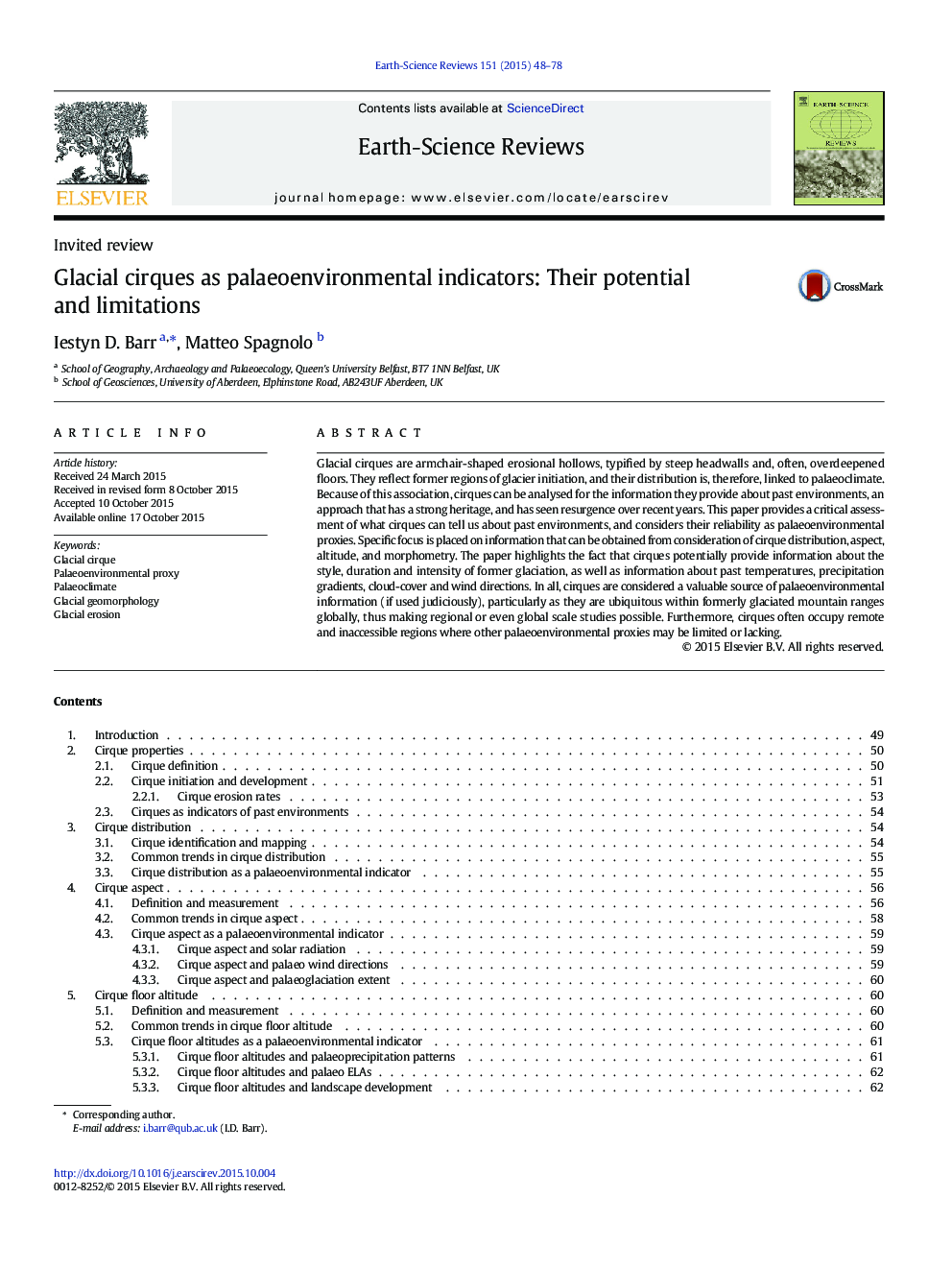| کد مقاله | کد نشریه | سال انتشار | مقاله انگلیسی | نسخه تمام متن |
|---|---|---|---|---|
| 4725671 | 1639951 | 2015 | 31 صفحه PDF | دانلود رایگان |
Glacial cirques are armchair-shaped erosional hollows, typified by steep headwalls and, often, overdeepened floors. They reflect former regions of glacier initiation, and their distribution is, therefore, linked to palaeoclimate. Because of this association, cirques can be analysed for the information they provide about past environments, an approach that has a strong heritage, and has seen resurgence over recent years. This paper provides a critical assessment of what cirques can tell us about past environments, and considers their reliability as palaeoenvironmental proxies. Specific focus is placed on information that can be obtained from consideration of cirque distribution, aspect, altitude, and morphometry. The paper highlights the fact that cirques potentially provide information about the style, duration and intensity of former glaciation, as well as information about past temperatures, precipitation gradients, cloud-cover and wind directions. In all, cirques are considered a valuable source of palaeoenvironmental information (if used judiciously), particularly as they are ubiquitous within formerly glaciated mountain ranges globally, thus making regional or even global scale studies possible. Furthermore, cirques often occupy remote and inaccessible regions where other palaeoenvironmental proxies may be limited or lacking.
Journal: Earth-Science Reviews - Volume 151, December 2015, Pages 48–78
